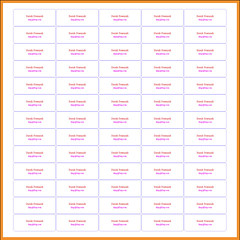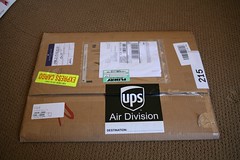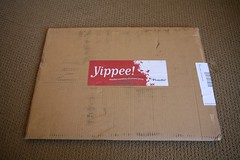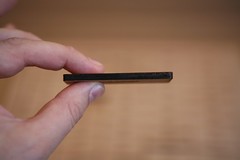Making Wooden Business Cards with Ponoko
Ponoko is a New Zealand-based print-on-demand service for 3D objects. I decided to give them a try by making some wooden business cards. Here’s how it went.
I started by downloading the Ponoko Illustrator templates. Their “Making Guide” is excellent. Basically you use different colors to denote laser cuts and fills in light, medium, or dark tones.
 I decided to use their P2 size, which is approximately 15×15 inches, so I could fit 65 small 28x70mm cards (the same size as Moo Mini Cards). I output an EPS and uploaded it to Ponoko.
I decided to use their P2 size, which is approximately 15×15 inches, so I could fit 65 small 28x70mm cards (the same size as Moo Mini Cards). I output an EPS and uploaded it to Ponoko.
Aside: I had a little problem with the system rejecting my EPS, but after contacting customer support, a Ponoko service dude helped me find the issue and even tweaked my EPS and sent it back to me. (Thanks, John!) If you decide to give this a try, make sure every last line is the exact right RGB color. Some of my color values were slightly off, and the system rejected the EPS without explaining why.
Once I got the EPS uploaded, I selected a material and placed the order. Bonus points to Ponoko for providing an RSS feed to monitor the status. (But minus points for the items in the feed linking to completely unstyled pages.)
Just under two weeks later, I got the package. (Love the “Yippee!” sticker.)
Just peel off the protective tape and enjoy!
They kinda smell like a campfire. It’s nice.
Bottom line? Everybody has cards. If you want to stand out in people’s minds at a busy conference, this could be a great way to do it. But beware, it’s not cheap. These 65 cards set me back $108.48, which is $1.66 per card. That’s crazy pricey, but not as expensive as buying a laser cutter.
If I was to do it again, I’d make a few changes. I selected Technoply Beech Plywood, which has lovely grain, but is very thick (the site says it’s only .16 inches thick, but it feels thicker). I’d love to try something thinner, but that would mean switching to plastic, and I loves me some trees.
Also, I used a combination of light raster and heavy vector line for my name on the card, but that left it looking like outlined type. Next time, I’ll use a medium raster with a medium vector line (more examples here).
I hope that someday Ponoko adds corrugated cardboard to their list of materials. I made cardboard cards by hand years ago and they were always a hit.
All in all, I’m very impressed with Ponoko. It’s a robust system that can make a whole lot more than just cards. Check out what other people have made in their showroom, or take a look at more photos of my awesome new wood cards.







